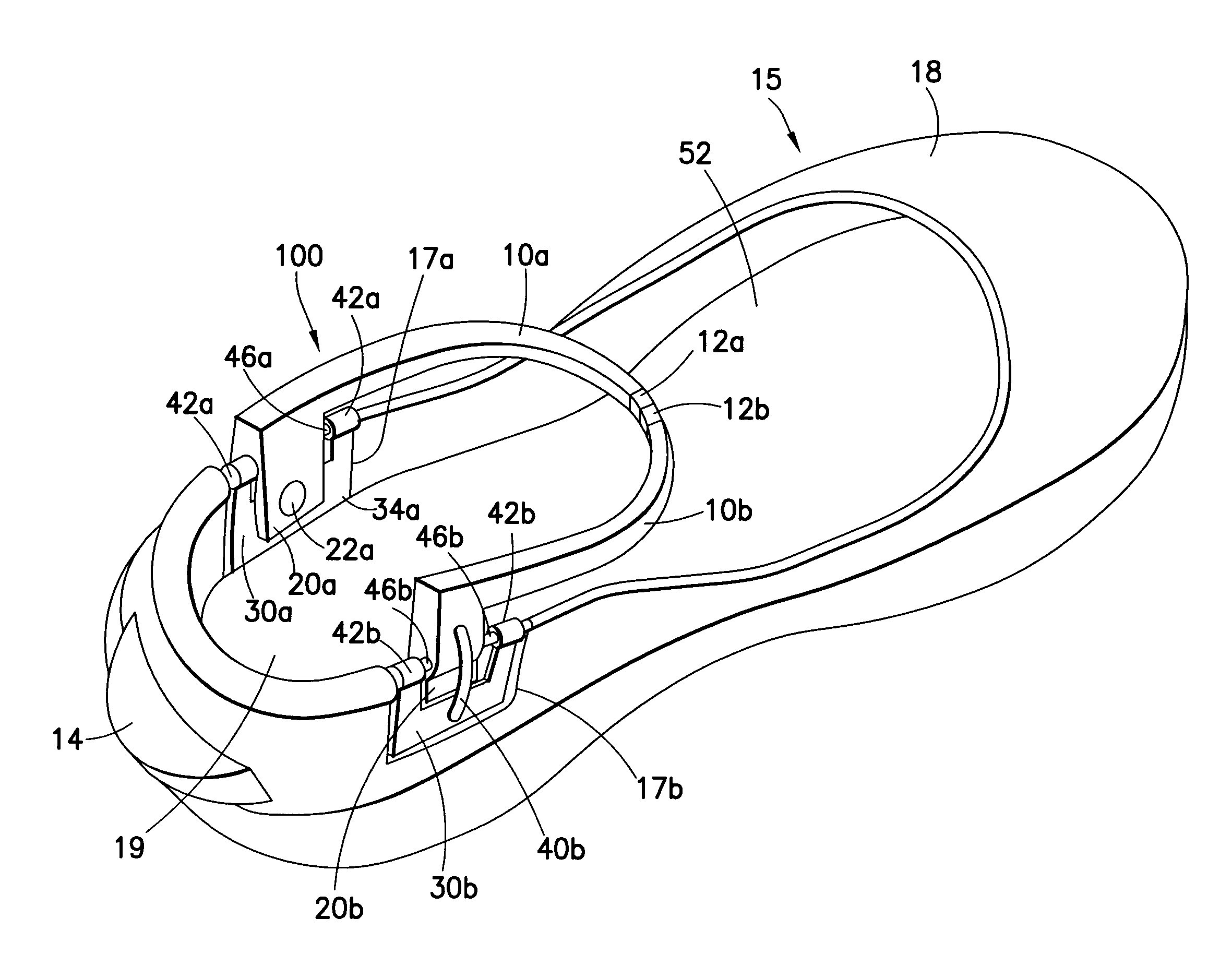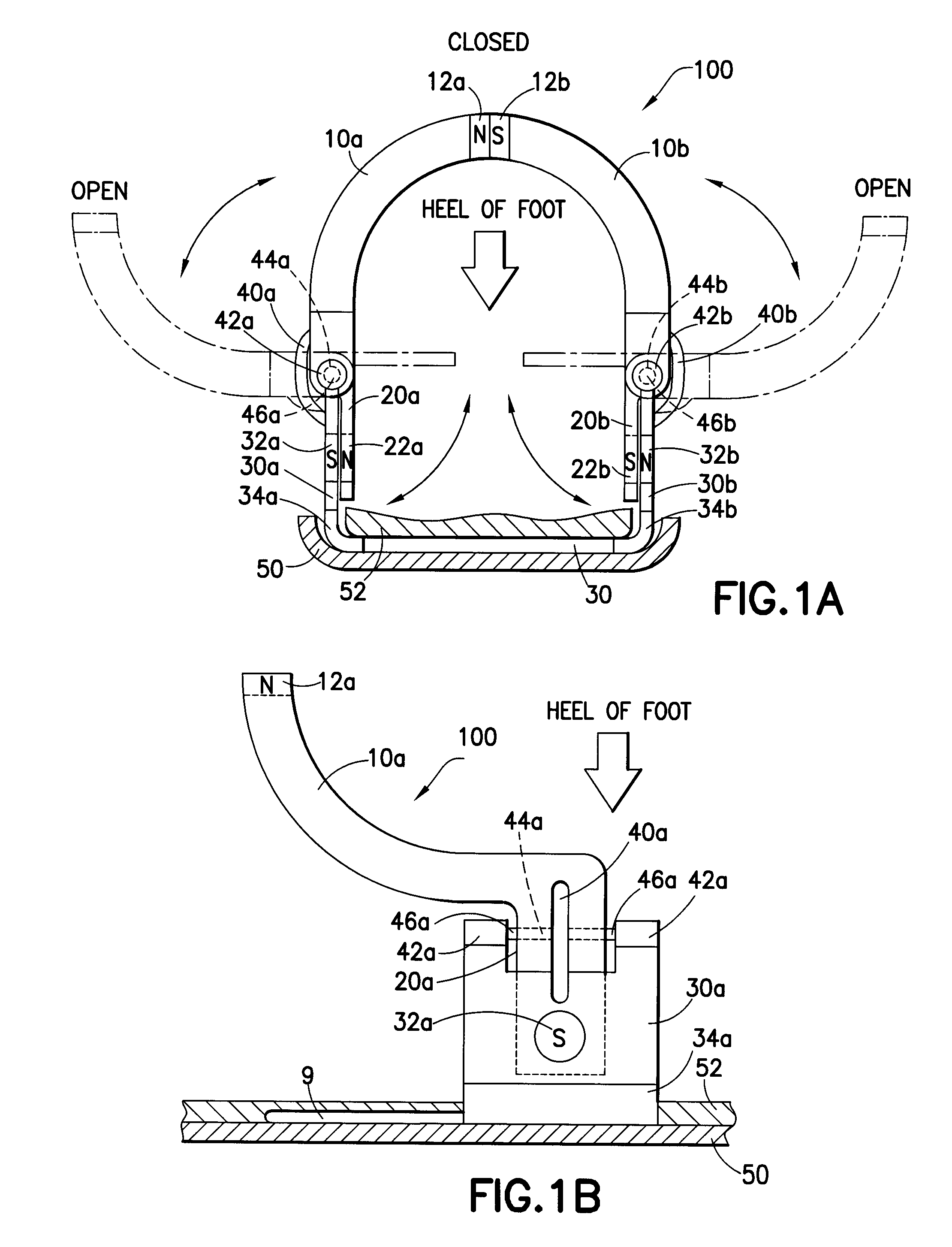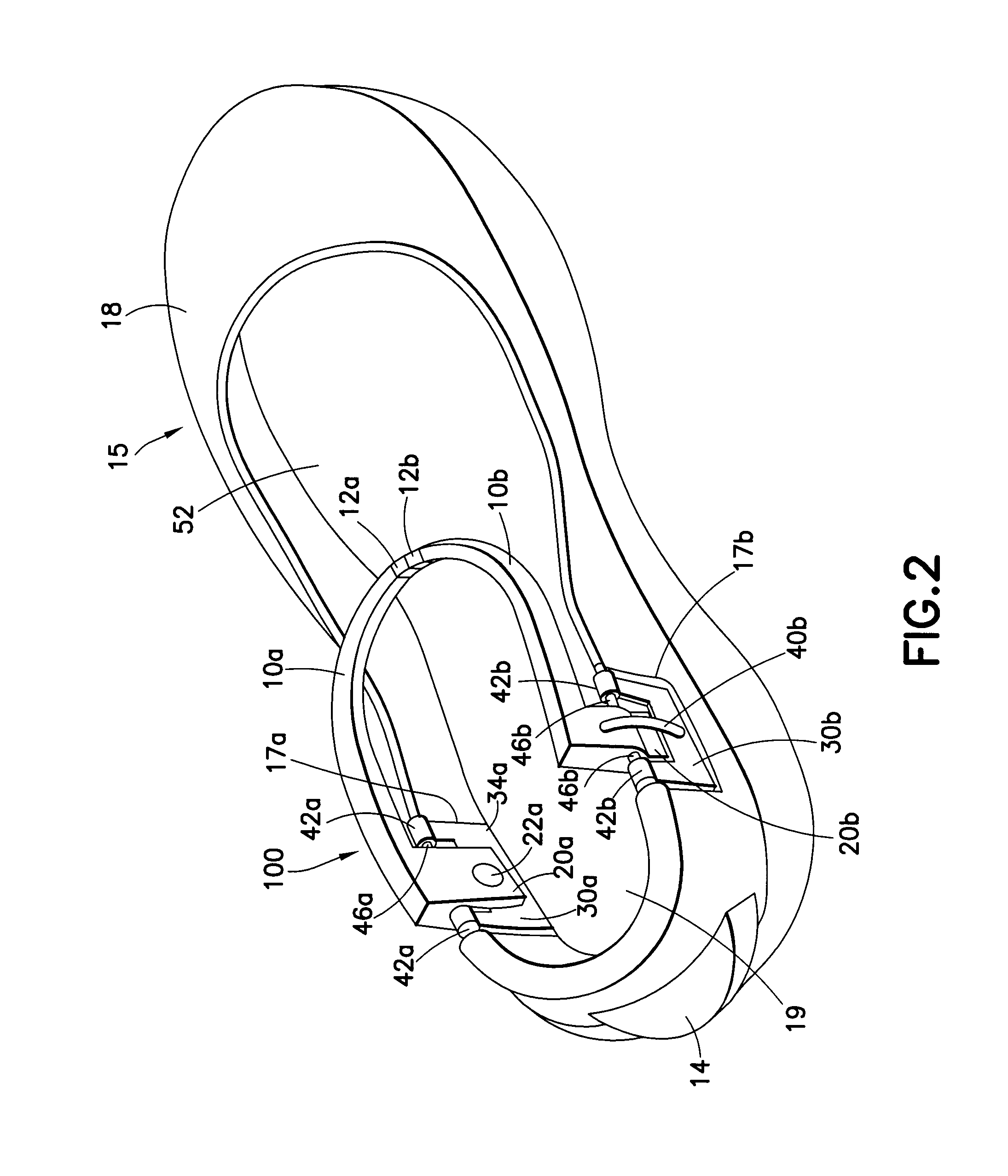Hands-free step-in closure apparatus
- Summary
- Abstract
- Description
- Claims
- Application Information
AI Technical Summary
Benefits of technology
Problems solved by technology
Method used
Image
Examples
first embodiment
[0050]FIG. 1A is a schematic showing a rear view of a first embodiment of a fastening device 100. The fastening device 100 shown in FIG. 1A comprises two straps 10a and 10b which are positioned on the left and right side of the user's foot, respectively. The straps are individually affixed to left 20a and right 20b levers which are, in turn, secured to corresponding left 30a and right 30b arms of a support bracket 30 (which, in this embodiment, is U-shaped) by means of a hinge rod (46a and 46b which passes through a hinge located on each lever. The hinge rods are, in turn, secured to the support bracket by attachment points located on the end of each arm of the support bracket. Thus lever 20a is attached to arm 30a by hinge rod 46a which passes through hinge 44a and is secured at attachment points 42a. Likewise, lever 20b is attached to arm 30b by hinge rod 46b which passes through hinge 44b and is secured at attachment points 42b.
[0051]The combined strap / lever components (10a-20a ...
second embodiment
[0059]A second embodiment of the fastening device 200 will now be described in detail with reference to FIGS. 3A and 3B. The underlying principles governing operation of the second embodiment are similar to those presented above for the first embodiment, but the mechanics differ. Here, the hinge rods 46a and 46b are aligned approximately perpendicular instead of approximately parallel to the base of the support bracket 30 and the user's foot engages the levers by sliding forward instead of stepping downwards.
[0060]The fastening device 200 comprises components analogous to those disclosed for the fastening device 100 of the first embodiment. FIG. 3A is a rear view of the fastening device 200 showing the inclusion of left 10a and right 10b straps with corresponding left 20a and right 20b levers. The straps 10a and 10b are respectively secured to the left 30a and right 30b arms of support bracket 30 by means of hinge rods 46a and 46b which pass through hinges 44a and 44b and are secure...
third embodiment
[0066]A front perspective view of a schematic illustrating a third embodiment of the fastening device 300 is provided in FIG. 4. The fastening device 300 comprises a structure and operating mechanism similar to that provided in the first embodiment, but includes a number of additional design features. For instance, each strap 10a and 10b is attached to, but physically separate from the left 20a and right 20b levers. Additionally, each lever 20a and 20b may be removed from its corresponding support bracket 30a and 30b by disengaging interior hinge rods 48a and 48b, respectively. Finally, the support brackets 30a and 30b themselves are designed such that they may be built (i.e., permanently incorporated) into the footwear during manufacture.
[0067]FIG. 4 shows that the posterior ends of each strap 10a and 10b form oval cylinders 33a and 33b, respectively, which fit into and are capable of sliding through a matching bore situated at the top of the left 20a and right 20b levers. This con...
PUM
 Login to View More
Login to View More Abstract
Description
Claims
Application Information
 Login to View More
Login to View More - R&D
- Intellectual Property
- Life Sciences
- Materials
- Tech Scout
- Unparalleled Data Quality
- Higher Quality Content
- 60% Fewer Hallucinations
Browse by: Latest US Patents, China's latest patents, Technical Efficacy Thesaurus, Application Domain, Technology Topic, Popular Technical Reports.
© 2025 PatSnap. All rights reserved.Legal|Privacy policy|Modern Slavery Act Transparency Statement|Sitemap|About US| Contact US: help@patsnap.com



